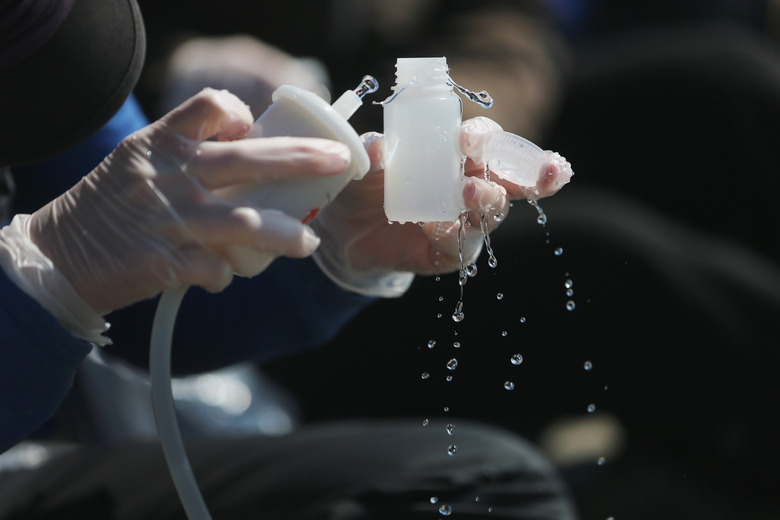Environmental Impacts Of Detergent
Detergents are cleaning products manufactured from synthetic chemical compounds, as opposed to soap, which originates with natural substances like lye and plant saponins. Detergents figure in an extensive array of industrial and home cleaning applications, including laundry and dishwasher detergents. Released into the flow of wastewater coming from the home, these detergents can have far-reaching environmental impacts.
Phosphate Nutrient Loading
Phosphate Nutrient Loading
Phosphate-containing detergents can create algae blooms in fresh water. These in turn use up the oxygen available for aquatic life, according to Lenntech, a water treatment facilities corporation affiliated with the Technical University at Delft, the Netherlands. This problem occurs because phosphorous and nitrogen from detergents are nutrients that stimulate excessive growth of algae and other aquatic vegetation, reports the Indiana University News Room. Nutrient loading with phosphates from laundry and dishwasher detergents, as well as from suburban lawn chemicals, can lead to eutrophication, a process by which a freshwater aquatic ecosystem slowly dies due to continual oxygen depletion. Phosphate-containing laundry detergents are banned in most states, and about a half-dozen states have banned phosphate-containing dishwasher detergents as of mid-2010.
Surfactant Toxicity Increase
Surfactant Toxicity Increase
Surfactants, or surface-active agents, are chemicals that reduce the surface tension of oil and water; in detergents, surfactants help dirt to drop out and stay out of clothing or other items being cleaned. Surfactants in detergents are toxic to aquatic life, persist in the environment and break down into additional toxic byproducts, according to the U.S. Environmental Protection Agency. In a freshwater environment, surfactant-containing detergents break down the protective mucus layer that coats fish, protecting them from parasites and bacteria, according to Lenntech. The reduced surface tension of water also makes it easier for aquatic life to absorb pesticides, phenols and other pollutants in the water. The EPA also advises that surfactants can disrupt the endocrine systems of humans and animals; Lenntech notes that surfactants decrease the breeding rates of aquatic organisms.
Packaging
Packaging
Laundry and dishwasher detergents come in plastic containers that are generally non-reusable and non-recyclable, according to the EPA. The volume of detergent packaging heading to landfills, given the weekly purchase of detergent-based household products by a significant portion of consumers, creates an enormous environmental impact. The European branch of the International Association for Soaps, Detergents and Maintenance Products announced in 2009 an industry-wide initiative to reduce detergent packaging by manufacturing smaller packages of more concentrated detergent products. American consumers have also noticed smaller laundry and dishwashing detergent packages on their supermarket shelves. The industry association notes that, to be successful, this packaging-reduction strategy will require consumers to carefully read the labels and cut down on the quantity of detergent used; significantly less is required for the same cleaning ability because of the new concentrated formulas.
References
Cite This Article
MLA
Hill, Cindy. "Environmental Impacts Of Detergent" sciencing.com, https://www.sciencing.com/environmental-impacts-of-detergent-5135590/. 5 December 2018.
APA
Hill, Cindy. (2018, December 5). Environmental Impacts Of Detergent. sciencing.com. Retrieved from https://www.sciencing.com/environmental-impacts-of-detergent-5135590/
Chicago
Hill, Cindy. Environmental Impacts Of Detergent last modified August 30, 2022. https://www.sciencing.com/environmental-impacts-of-detergent-5135590/
